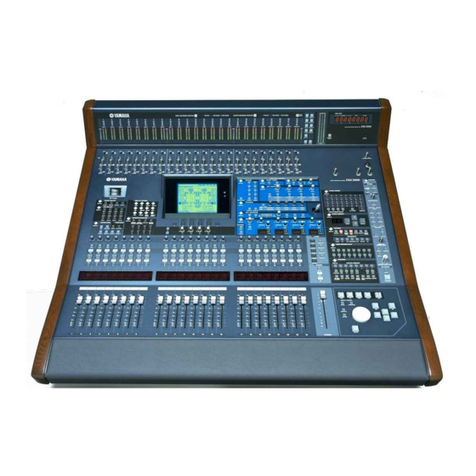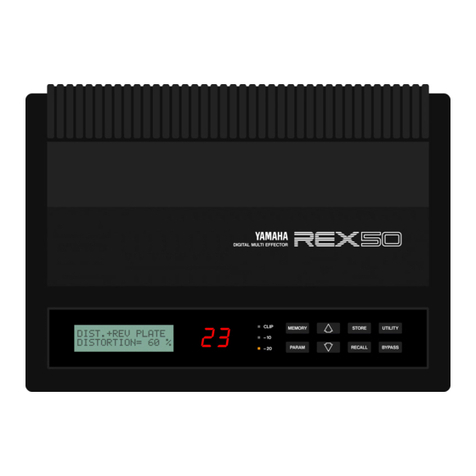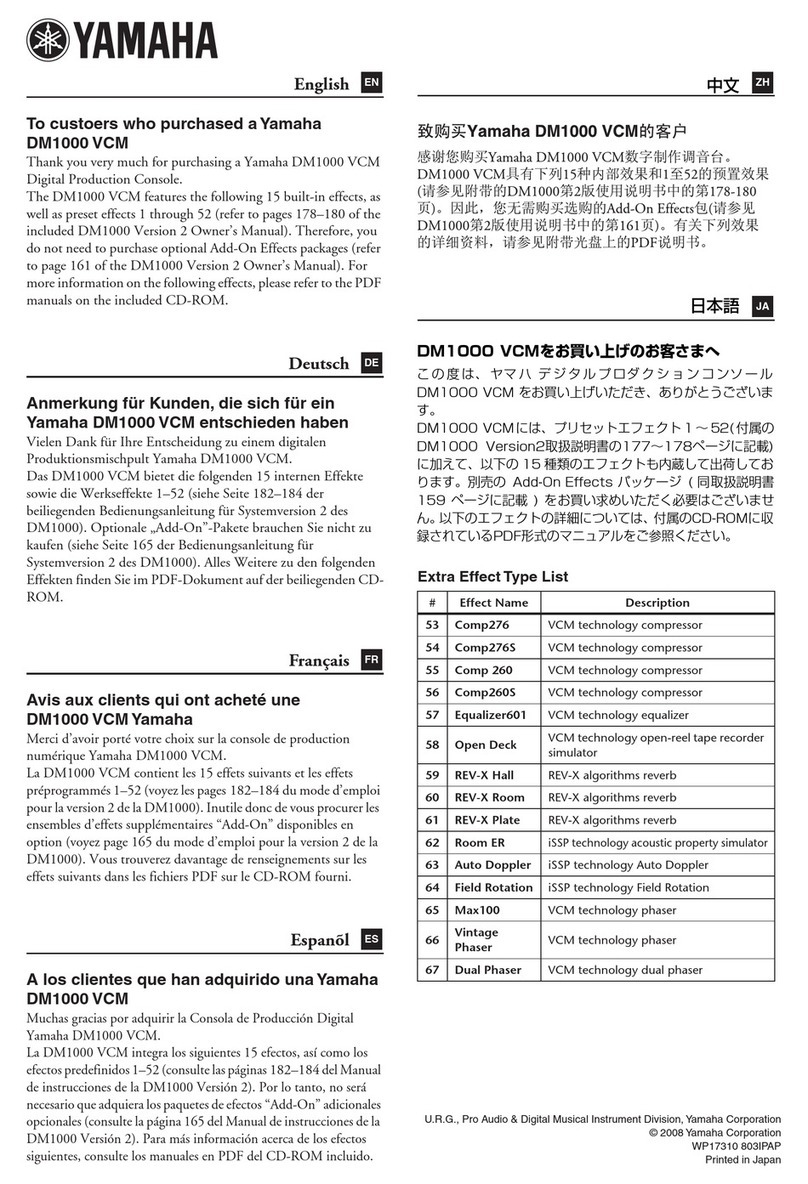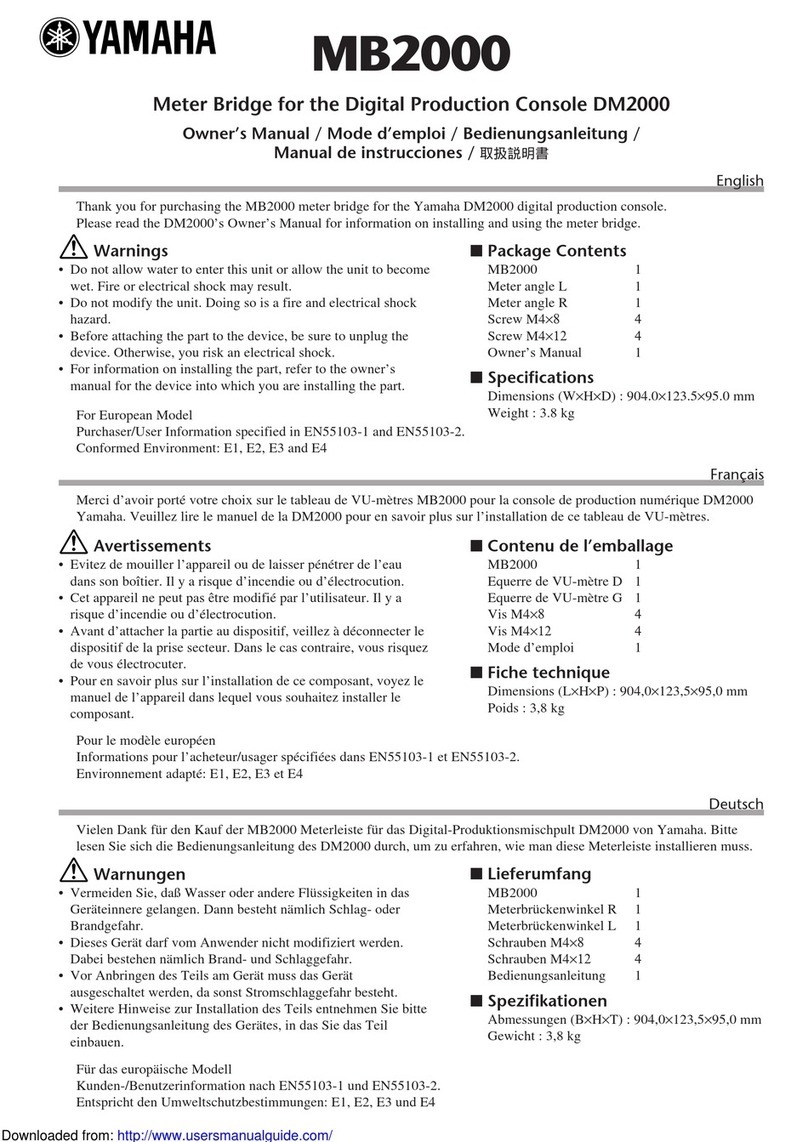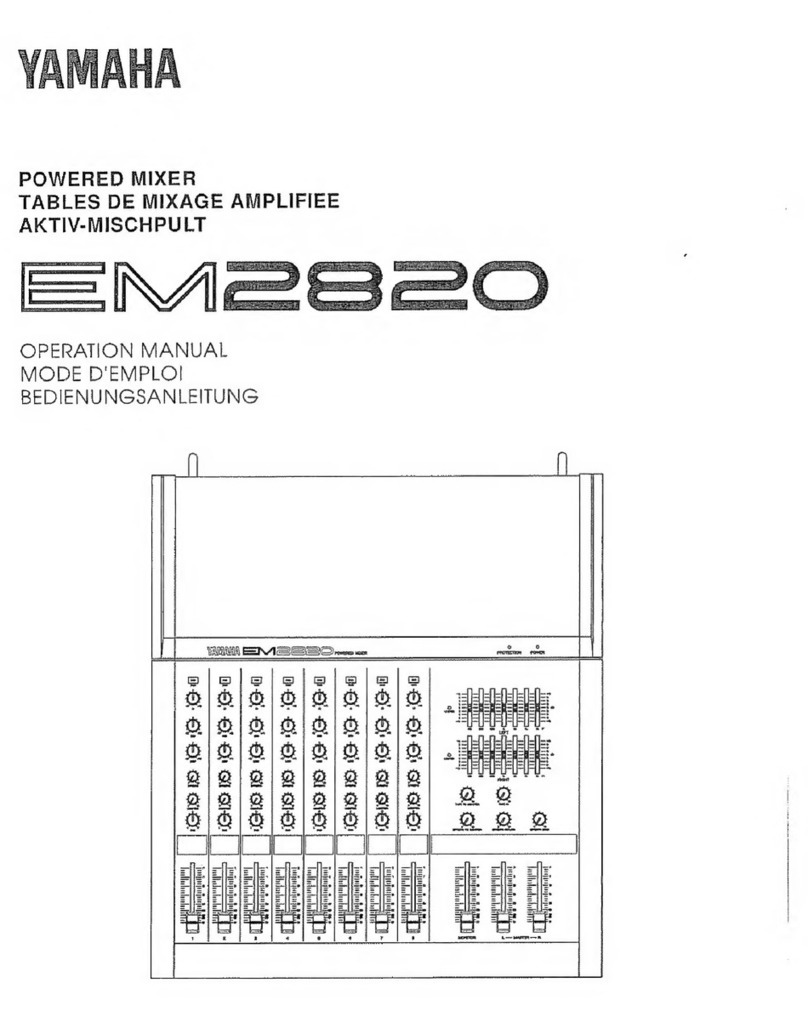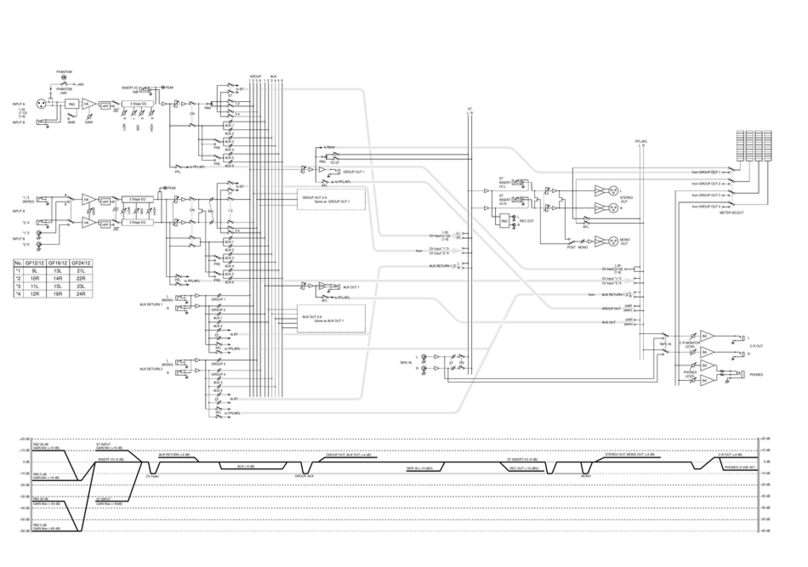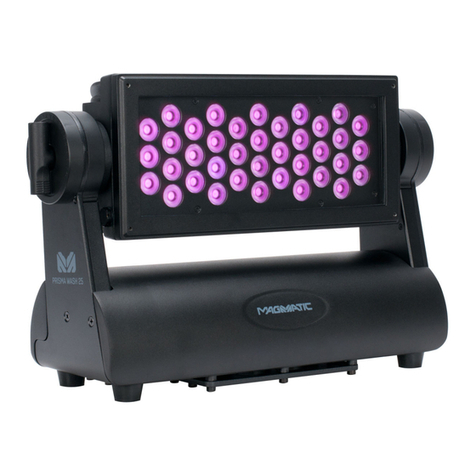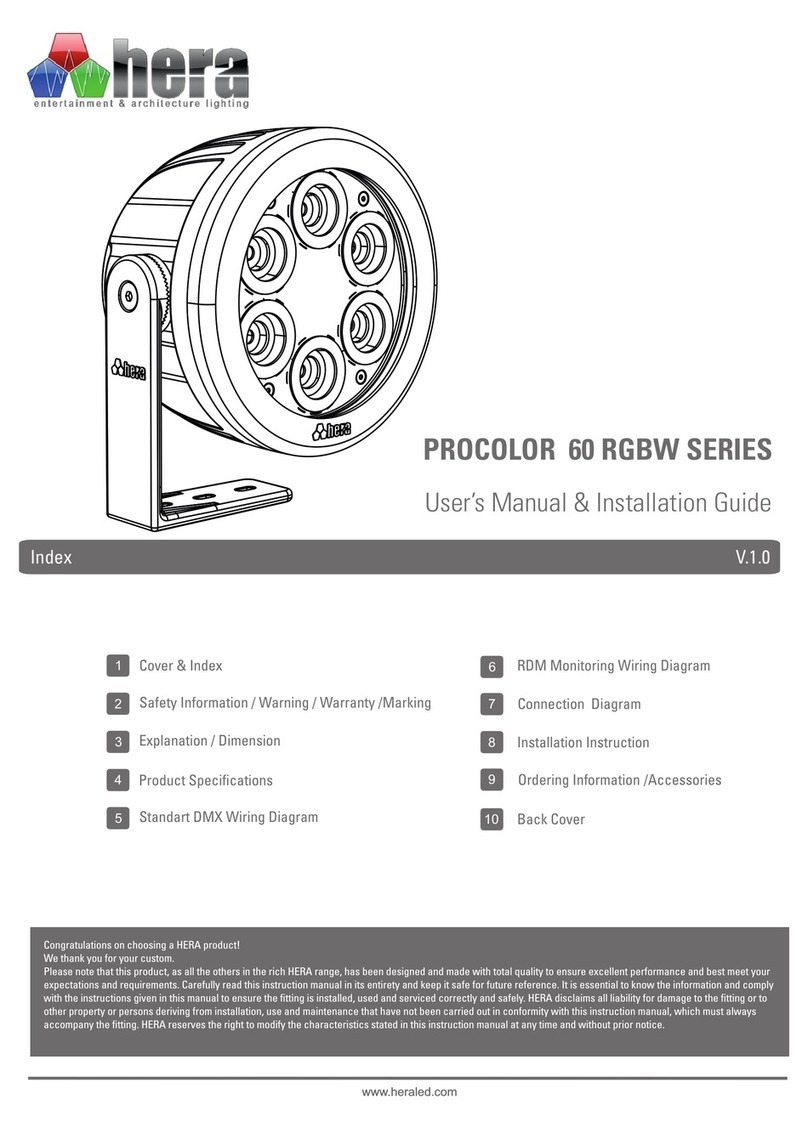
ЕМ-ЗОО
РА
MIXER
The
YAMAHA
EM-300
PM
MIXER
with
its
twelve
input
channels,
two
output
channels
(stereo)
and
built-in
power
amplifier
is
extreme-
ly
easy
to
use
and
operate.
It
is
equipped
with
a
graphic
equalizer,
reverberation
unit
and
moni-
tor
circuit
which
extend
the
mixer's
application
range
from
ordinary
public
address
(PA)
to
business
uses.
Please
read
through
these
instructions
so
that
you
will
know
exactly
how
to
use
the
EM-300
in
accordance
with
the
intended
application.
CONTENTS
ВЕРОНЕ
ОРЕВАТІОМ....................
1
BLOCK
DIAGRAM
......................
2
CONTROL
PANEL
OPERATION
............
3
CONNECTION
FIGURE...................
5
BACK
PANEL
OPERATION................
6
INPUT/OUTPUT
SPECIFICATIONS...........
8
CHARACTERISTICS
FIGURES..............
9
CABLE
CONNECTIONS...................
9
BEFORE
OPERATION
Check
the
following
points
before
operating
your
mixer.
€
Installation
location
Wherever
possible,
avoid
installing
the
mixer
in
a
€
Do
not
set
the
controls
to
the
following
positions.
INPUT
LEVEL
controls
—50
for
all
channels
Channel
faders
Max.
for
all
channels
location
which
is
exposed
to
direct
sunlight,
or
a
great
deal
of
humidity,
dust
or
vibration.
Do
not
block
the
ventilation
holes
in
the
top,
bottom
and
back
panels
of
the
mixer
since
they
are
designed
to
dissipate
the
heat
which
is
generated
internally.
Connections
Make
absolutely
sure
that
you
use
the
commercially
available
power
line
voltage
to
power
the
mixer.
Refer
to
page
5
for
the
connections
and
then
pro-
ceed
to
connect
properly.
When
performing
the
con-
nections,
make
absolutely
sure
that
the
power
switch
is
set
to
OFF..
Speaker
impedance
The
acceptable
speaker
load
is
from
8
to
16
ohms
for
USA
and
Canadian
models
and
from
4
to
16
for
general
models.
Do
not
connect
a
speaker
system
with
a
total
impedance
of
less
than
the
minimum
above
rating.
LOW-EQ,
HIGH-EQ
controls|
Max.
for
all
channels
GRAPHIC
EQUALIZER
[Master
faders
[Max
|
Although
these
positions
are
not
the
ones
usually
used
for
normal
use,
bear
in
mind
that
if
you
inad-
vertently
set
the
controls
to
the
positions
given
above,
the
conditions
governing
the
equipment
connected
to
the
input
connectors
and
the
load
speakers
may
result
in
damage
to
the
speakers.
Maintenance
The
color
of
the
mixer
panels
may
undergo
change
if
they
are
cleaned
with
a
paint
thinner
or
similar
liquid.
Always
use
a
soft
dry
cloth
to
wipe
off
any
dirt
on
the
panels.

